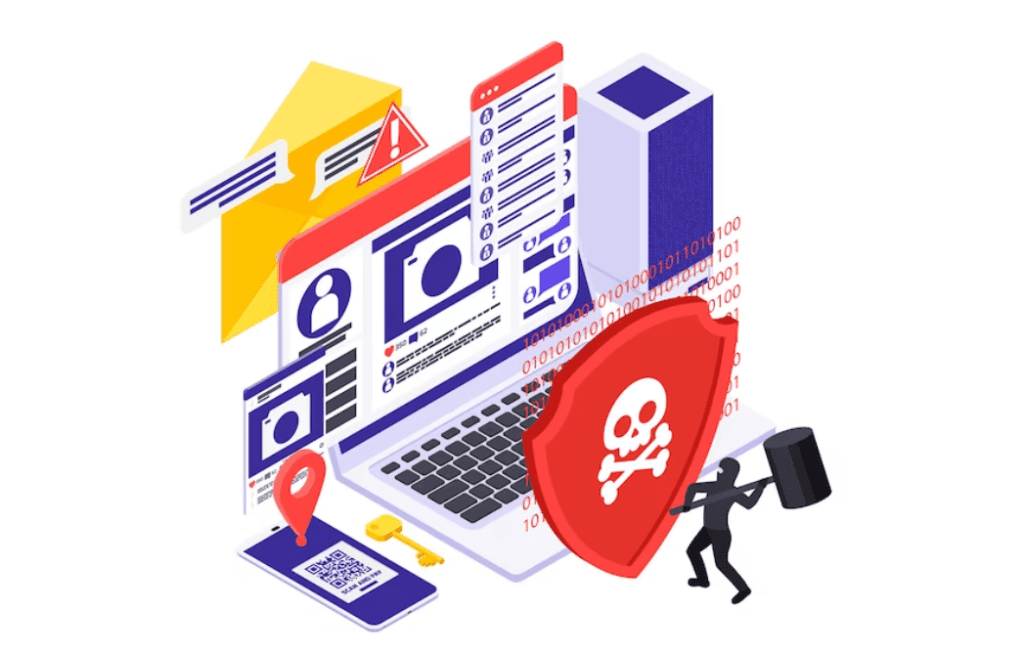Best Practices to Prevent Cyber Threats to Your Website
Web Development Security: Prevent Cyber Threats
In today’s digital landscape, website security is of paramount importance. With the ever-growing number of cyber threats, it is crucial for web developers to implement robust security measures to protect their websites. This blog post will explore the best ideas to prevent cyber threats and ensure the utmost safety of your website.

Cyber Threats
Web development security is crucial for protecting websites and web applications from potential threats. Secure coding practices, like validating and sanitizing user input, significantly prevent vulnerabilities like SQL injection. For instance, if a login form doesn’t correctly validate user input, any attacker could exploit this weakness and use SQL injection to bypass authentication and gain unauthorized access.
For example, if a login form fails to validate user input correctly, an attacker can exploit this vulnerability and perform SQL injection to bypass authentication and gain unauthorized access.
Another critical aspect is preventing Cross-Site Scripting (XSS) attacks. By validating and encoding user-generated content, developers can prevent the execution of malicious scripts injected into a website. For example, if a website allows user comments, proper validation and encoding ensure that potential scripts are treated as data rather than executable code. By following secure coding practices, implementing input validation and sanitization, and protecting against common vulnerabilities like SQL injection and XSS attacks, web developers can ensure the security of their applications.
Web Development Security
Web development security involves implementing measures to protect websites and web applications from security threats. Secure coding practices, like validating and sanitizing user input, are essential to prevent vulnerabilities like SQL injection. For example, if a login form doesn’t correctly validate user input, an attacker could use SQL injection to bypass authentication and gain unauthorized access.
Preventing Cross-Site Scripting (XSS) attacks is another crucial aspect. Developers should validate and encode user-generated content to avoid executing malicious scripts. By following secure coding practices and protecting against common vulnerabilities, web developers ensure the security of their applications.
Ways to Prevent Cyber Threats
Web development security refers to the set of practices and measures taken to protect websites and web applications from potential security threats and vulnerabilities. It involves implementing various security controls and best practices to ensure the confidentiality and availability of the website and its data.
Keep Your Software Up to Date
Keeping your software current is one of the most fundamental yet critical practices to prevent cyber threats. This includes your content management system (CMS), plugins, themes, and other software used in your website development. Developers often release different updates to address security vulnerabilities. So, it is imperative to install these updates promptly. Neglecting to do so can leave your website exposed to potential attacks.

Use Strong and Unique Passwords
Passwords serve as the initial line of defence against cyber threats. Using strong and unique passwords for all your website accounts, including your CMS, hosting, and FTP accounts, is vital. A strong password comprises a combination of uppercase and lowercase letters, numbers, and special characters. Avoid using common passwords or easily guessable information such as your name or birthdate. Consider utilizing a password manager to store and generate complex passwords securely.
Implement Secure Socket Layer (SSL) Encryption

SSL encryption is indispensable for securing data transmission between your website and visitors. It ensures sensitive information. For example, login credentials and credit card details are encrypted and cannot be intercepted by malicious actors. Implementing SSL encryption is relatively straightforward and can be achieved by obtaining an SSL certificate from a trusted certificate authority (CA). Once installed, your website will display the padlock icon in the browser’s address bar, signifying a secure connection.
Regularly Backup Your Website
It is essential to regularly back up the website to prevent data loss in a cyber attack. Backup data must be stored in a secure location, preferably off-site or in the cloud. In the event of a sudden security breach, you can restore that website to the previous version, minimizing downtime and potential damage. Automating the backup process ensures that backups are performed regularly and without human error.
Application Firewalls
Web Application Firewalls (WAFs) provide an additional layer of security by filtering and blocking malicious traffic before it reaches your website. WAFs can detect and block common cyber threats like SQL injections, cross-site scripting (XSS), and distributed denial-of-service (DDoS) attacks. Implementing a WAF significantly reduces the risk of your website falling victim to these types of attacks.
Scan for Vulnerabilities
Regularly scanning your website for vulnerabilities is crucial in identifying potential security weaknesses. Numerous online tools and services are available that can scan your website for common vulnerabilities and provide recommendations for remediation. By promptly addressing these vulnerabilities, you can prevent cyber threats from exploiting them and gaining unauthorized access to your website.
Educate Yourself
Staying updated on the newest security threats and best practices is essential in preventing cyber threats. Encourage yourself and your team to attend web development security training courses and stay informed about emerging threats. You can proactively implement security measures and effectively respond to potential threats by educating yourself and your team.
Who Prevents Cyber Threats?
Preventing cyber threats is a collective effort that involves multiple stakeholders, including individuals, organizations, and governments. Each has a role in mitigating and minimizing the risks associated with cyber threats.

At an individual level, users can take steps to prevent cyber threats by practising good cybersecurity hygiene. This includes strong and unique passwords, regularly updating software and applications, being cautious of phishing attempts, and avoiding clicking suspicious links or downloading unknown files. Individuals can significantly reduce their vulnerability to cyber attacks by being vigilant and educated about potential threats.
Organizations also play a crucial role in preventing cyber threats. To protect their networks and systems, they should implement robust cybersecurity measures, such as firewalls, intrusion detection systems, and encryption protocols. Regular security audits, employee training programs, and incident response plans are essential for maintaining a secure environment. Additionally, organizations should stay updated with the latest security patches and follow industry best practices to ensure the protection of digital assets and sensitive information.
Governments and regulatory bodies are responsible for enforcing cybersecurity policies and regulations that promote a secure online environment. They can establish frameworks for data protection, privacy laws, and cybersecurity standards that organizations must adhere to. Governments can also invest in cybersecurity research, development, and education to enhance the overall security posture of the nation.
Preventing cyber threats requires a combined effort from individuals, organizations, and governments. By practising good cybersecurity habits, implementing robust security measures, and enforcing regulations, we can collectively minimize risks and ensure a safer digital landscape.
In conclusion
Website security should be your top priority for web developers. By implementing these best practices to prevent cyber threats, you can significantly minimize the risk of your website falling victim to malicious attacks. Keeping your software up to date, using strong and unique passwords, implementing SSL encryption, regularly backing up your website, utilizing web application firewalls, periodically scanning for vulnerabilities, and educating yourself and your team are all crucial steps in safeguarding your website from cyber threats. Stay vigilant, stay updated, and protect your website from the ever-evolving landscape of cyber threats.
